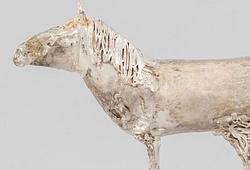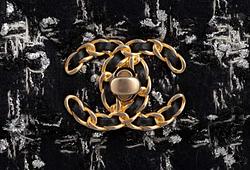An Ilbery, London, pocket watch in the shape of a peach. Made for the Chinese market.
Made in the late 18th, early 19th century. Case in 18K gold set with natural pearls and enamel. Beautiful enameled inside and a highly decorative engraved gilt movement throughout with duplex escapement. Key wind with two keys. (One key enameled).
Damage to enamel. Second-hand missing. Rusty balance. Not working.
Provenance
Hendrik van Gilse van der Pals (1856 - 1928).
Literature
A similar watch is illustrated in Alfred Chapuis, Montres et Emaux de Genève, Lausanne, 1944, as being part of the H. Wilsdorf Collection and again in P.F. Schneeberger, Collection Hans Wilsdorf, Geneva, 1970, page 44.
Another example is in the Time Museum in Rockford (Illinois) and is illustrated in C. Cardinal, La Montre des origines au XIXe siècle, Fribourg, 1985, page 63.
More information
William Ilbery, London (?-1839). Active in London from 1780 in Goswell Street, he moved to Duncan Terrace towards the end of the 18th century. Following James Cox in London and Jaquet-Droz in Switzerland, he too specialised in the production of luxury watches for the Chinese Market. His early production was very much in the English style featuring a full plate movement and an English type single wheel duplex escapement; however, for his highest quality watches, he incorporated a spring detent escapement. The cases were also very much in the style of those produced in England at the time. Later, along with Jaquet-Droz's Swiss production signed in London and that of William Anthony who worked in London, the watch movements he produced were much inspired by the Lepine calibre with free standing barrel. In fact he set a new standard for all watches made for the Asian Market. He organized the production of profusely engraved movements in Switzerland, mainly in Fleurier; he was followed in that by makers such as Bovet and Juvet who also worked in Fleurier (Val de Travers). Bovet and Duvet organised a mass production of silver-cased watches and later, once their Canton manufactures were opened, they assembled these directly in China. Ilbery can therefore be considered as the "father" of Chinese watches, as they are known today. The cases of his watches were decorated in Geneva by the best enamellers, such as Jean-Francois-Victor Dupont, who often signed his work, and Jean-Louis Richter, whose enamels were generally not signed. He seems to have maintained close contacts with the continental trade since a watch signed "Ilbery Paris" is known and Ilbery & Son are recorded in London and Fleurier, other than in Canton. "Chinese watches” were often sold by pairs and therefore each pair was fitted in a box especially designed. Whenever such pairs of watches were enamelled, their ornaments were always painted in a symmetrically opposed manner, as in mirror images.










































